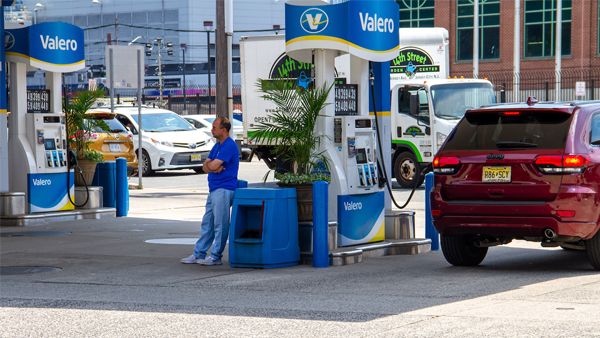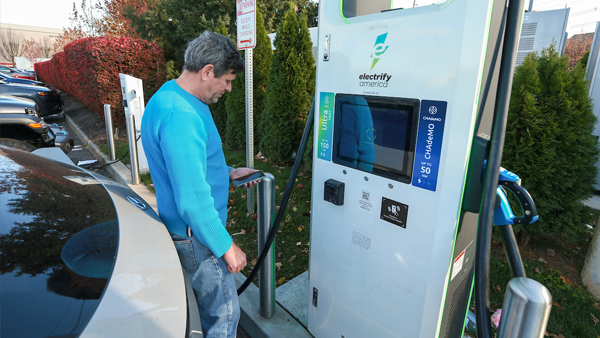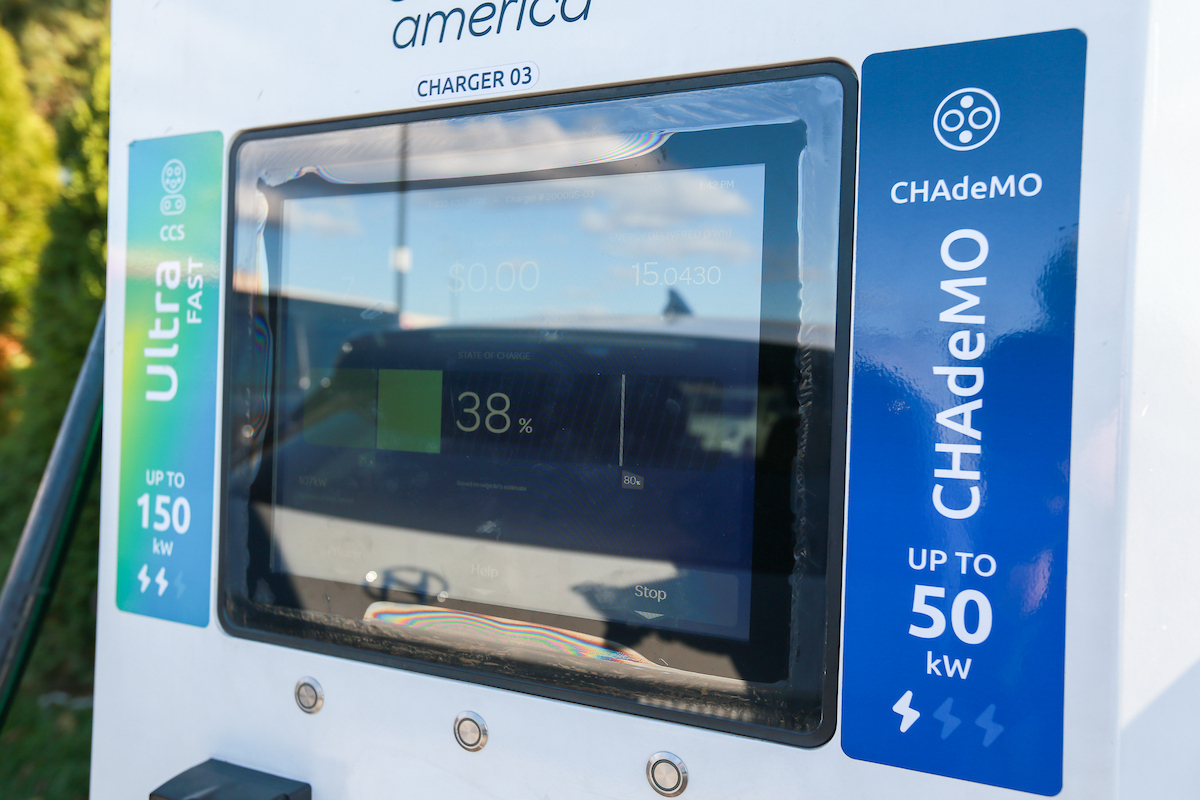When Electric Vehicles Rule the Roads, What Happens to Gas Stations?
The reality of supply and demand will inevitably lead to some contraction. It’s happening already.
THEY ARE EVERYWHERE that’s anywhere on American roads. On the corner of your town’s busiest intersection. Right before the highway junction. At the heart of the turnpike rest stop.
Gas stations are one of the country’s most widespread businesses, with one fuel pump for every 10 miles of road in the U.S, according to an analysis by Coast. But that ratio is on the verge of significant change.
The transformation of America’s vehicle fleet from predominantly internal combustion engine to electric vehicle (EV) is underway, and it’s making an ultimatum to fuel retailers: adapt or die. Many in the industry have already begun a gradual transition to their business model of the future – one in which charging equipment replaces the pump as a revenue source. Look around the parking lot of your local Wawa, Quick Chek or Sheetz today, and you might already spot a charging station or two.
“Like any industry, you’re seeing some fast movers,” said Becky Knox, director of public policy for North America for EVBox, a provider of EV charging infrastructure and software solutions. “Circle K has done a great job of trying to expand their network. Others are still in the exploratory phase, and some are sort of in the middle, putting a few stations here, putting a few stations there, and trying to get a sense of how their customers are reacting.”
But the industry’s largest players are monitoring the data closely and developing long-range plans to position their locations to become hubs for non-petroleum fuels. The change is not likely to proceed evenly, as experts expect there will be winners and losers.

Kevin Ortiz
Most vulnerable is your friendly neighborhood gas station. The small station in the middle of a suburban town relies on a customer type that will dwindle in number: the person who needs to stop for a fill on the way to work or while shuttling the kids back and forth from soccer practice. These drivers will be able to charge their EVs at home with level two charging equipment or level one cords that you can plug into any standard 120-volt outlet.
“The local gas station in town needs to study the market to see if there’s demand for high-speed charging at their location, because the gas stations that are getting into this are not trying to compete with level two charging,” said Ryan McKinnon, spokesman for the Charge Ahead Partnership. “If you can charge at home, you’re probably not going to spend the money to use a high-speed charger at the gas station.”
The reality of supply and demand will inevitably lead to some contraction. It’s happening already.
As part of its recently released Energy Transition Strategy, Shell announced it would divest 500 fuel stations per year in 2024 and 2025, while sharpening its focus on the growing EV market. The company plans to expand its publicly available charge points from 54,000 today to 200,000 by 2030. The document notes that it has a “competitive advantage” in the market with its associated convenience stores, where customers can stop for a coffee and a snack while charging up. Major gas station chains contacted for this story declined to comment.
There are 120,000 convenience stores in the U.S. with gas pumps, and they’re responsible for selling 80 percent of America’s motor fuels, according to the National Association of Convenience Stores. Experts believe these sites will have an advantage over pure stations that offer no other services because they’re a more desirable place to kill time while the car charges (today’s direct current fast chargers take 20 minutes to an hour to replenish a spent battery).
Highway truck stops and rest areas with stations are particularly well-positioned because the need for their services will change the least. Major highways like the I-95 Corridor are full of drivers making long-distance trips, such as big rigs hauling freight, families on vacation, and business travelers. These people have to stop along the way to recharge their vehicles and their own mental batteries.
“We hear all the time about how gas stations are going to go away because of different types of fuels. That might be the case with gas stations; it’s not going to happen with truck stops and travel centers,” said Darren Schulte, vice president of membership for the National Association of Truck Stop Operators (NATSO). “Just as the stagecoaches in the Old West had to stop for the horses to drink and the riders to get something to eat and rest for the night, that’s the same exact thing that’s going to happen, regardless of the fuel.”
Changing Needs
While EVs are garnering most of the attention, industry representatives stress that customers are ultimately in the driver’s seat in terms of what happens next. Whether the demand calls for charging, gas, diesel, hydrogen for trucks, or some other fuel, it will be met.
“As a whole, our members are focused on what we’d call a technology-neutral approach,” NATSO Vice President of Public Affairs Tiffany Wlazlowski Neuman said. “Whatever fuels are needed to run the vehicles of today and tomorrow, those are the fuels that we want to invest in.”

ed murray
EV drivers can expect that the configuration of charging equipment will change to cater to them more explicitly. Where charging stations today have tendency to be relegated behind the curbs in the corners of parking lots – making them inaccessible to certain vehicles, like cars hauling trailers – Schulte sees a future where drivers will be able to pull into large parking stalls in the middle of spacious lots and plug in. And in an effort to cater to the drivers, rest stops may revive an iconic service of the 1950s – the car hop. Schulte said he can envision truckers and travelers ordering food to their parking stalls while they charge, using apps or kiosk-based ordering systems.
Barriers to Expansion
The federal government has played a key role in nudging the conversion of gas stations forward through the Bipartisan Infrastructure Law. Roughly half of its National Electric Vehicle Infrastructure (NEVI) Program grants, which cover the purchase and installation of charging equipment, have so far gone to truck stops, travel centers and fuel retailers, Wlazlowski Neuman said.
Still, advocates for fuel retailers contend there are significant policy and regulatory frameworks that need to be addressed in order for the nation’s charging network to reach its potential. In some cases, they say, it’s a matter of antiquated legislation catching up with technologies it wasn’t designed for. For example, Wlazlowski Neuman said that in some states, stations can’t sell electricity unless they are regulated like a utility. NATSO and its members have made progress working with state legislatures to enact changes, she said.

ed murray
“Demand charges” billed by utilities for high rates of power consumption in short time periods are also viewed as a barrier. McKinnon said demand charges disincentivize stations from investing in charging infrastructure because they make it harder to turn a profit.
“If you build a factory, you’re going to need a lot of power, but that’s going to be a consistent load that you’re pulling, where every day is basically the same. EVs aren’t ubiquitous enough at this point to have a guaranteed, consistent pull,” McKinnon explained. “So your chargers might not be used that frequently, but then suddenly four cars pull up and you’re losing money that month because your demand charge is so high.”
Fuel retailers have also been vocal in their opposition to what they see as unfair competition from utilities. They argue that these entities can’t lose because they pass on the cost of the infrastructure to their ratepayers. A convenience store owner might be reluctant to invest $500,000 in chargers when a utility builds a competing one down the street at no financial risk.
On top of that, they contend that their strategic locations and the services they offer motorists make them the most logical places to host charging. The utilities lack the real estate, and therefore tend to install chargers at places like local town halls, where they are little-used because they’re too far from the highways where people need them most, McKinnon said.
“We want to replicate the experience of what drivers expect, that means amenities such as a store where they can buy food, have a drink, sit down and relax. … A place that’s open 24 hours with attendants, folks who are there to help if the charger is broken,” McKinnon said. “These are the basic amenities at gas stations that utility-owned chargers don’t offer and it is ultimately slowing EV adoption, because they’re building out the charging network in a way that’s not attractive to non-EV drivers.”
Karl Vilacoba is the Communications Director for the Monmouth University Urban Coast Institute.